
Everything You Need to Know about Blood Donation
BM116 may help with dizziness, headache & blurred vision in people with blood pressure issues.
Are you considering blood donation? Every blood donor should be aware of the meaning of this act, its risks, and its benefits.
First, blood donation is a solidarity gesture of donating a small amount of your blood to save the lives of people who undergo extensive and complex medical treatments and interventions, such as transfusions, transplants, oncological procedures, and surgeries.
Your blood comprises cells that carry oxygen and nutrients to your body, defend it against infections, and participate in clotting.
Before getting into this topic, you should know that an adult person has an average of five liters of blood, and a maximum of 450 ml is collected in a donation – a significant value that can help save up to four lives. After the procedure, the donor’s body replaces the donated volume of blood in the first 72 hours.
The different blood types
Blood types are classified according to the presence or absence of agglutinogens (antigens) on the surface of red blood cells, or agglutinins also called antibodies. Thus, blood can be classified into four types according to the ABO system:
Blood A. It is one of the most common types and contains antibodies against type B, also called anti-B. People with type A blood can only receive blood from people of type A or O.
Blood B. It is one of the rarest types and contains antibodies against type A, also called anti-A. People with blood type B can only receive blood from type B or O.
AB blood. It is another rare type and does not have antibodies against A or B, meaning it can receive the blood of all types without any reaction.
Blood O. It is known as a universal donor and is one of the most common types; it has anti-A and anti-B antibodies and can only receive blood from type O people; otherwise, agglutination of red blood cells may occur.
To simplify, people with type O blood can donate blood to anyone, but they can only receive donations from people with the same blood type. Type AB people, on the other hand, can receive blood from anyone but can only donate to people with the same blood type.
The transfusion should only be done in compatible people. Otherwise, transfusion reactions may occur, which can lead to complications.
What is the Rh factor?
In addition to the classification of blood types according to the ABO system, blood types are also classified according to the Rh factor + and -.
The Rh factor corresponds to an antigen in red blood cells and must also be considered during the transfusion process. Otherwise, there may be severe complications related to blood transfusion.
People who have the Rh factor are classified as Rh+ and can receive blood from people who are both Rh+ and Rh-. However, they can only donate to others who also have Rh+.
On the other hand, people who do not have the Rh factor are classified as Rh- and can donate blood to people who do or do not have the Rh factor. But, they can only receive blood from Rh- people.
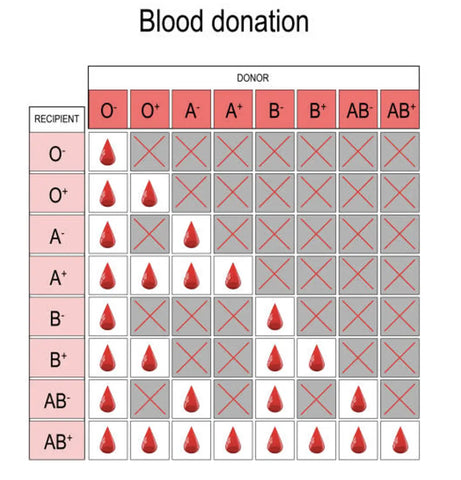
Who can donate blood?
Can you donate blood? Let’s see if you fit the requirements…
People between 16 and 69 years old and weighing more than 50 kg can donate blood.
When you do it, you must present an official document with a photo.
Be aware that minors under 18 can only donate with formal consent from a responsible parent or tutor.

What is autologous Blood Donation?
Autologous donation refers to a blood donation the patient chooses to do for himself. For instance, it is done in advance in case of scheduled surgery.
For this, you must have a written request from your surgeon defining the amount of blood needed and the type and date of the surgical procedure.
In autologous donation, you will receive your own blood. So, there is no risk of possible contamination in a transfusion.
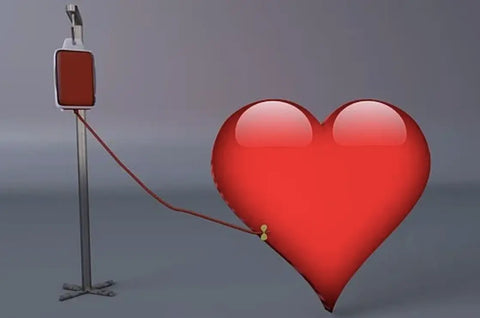
What is Apheresis Blood Donation?
This one refers to donating a blood component using a collection machine.
A collection machine separates the blood components by centrifugation, allowing the selective collection of one or more components.
Subjected to centrifugation, the blood is separated into its primary components: plasma, platelet-rich plasma, white blood cells, and red blood cells. After separation, any of them can be selectively collected.
Plasma
Plasma is yellowish and transparent and mainly consists of water, salts, and proteins. It may be helpful for patients who need clotting protein replacement. It is also a raw material for the industrial production of blood-derived medicines, such as human albumin, coagulation proteins, and immunoglobulins.
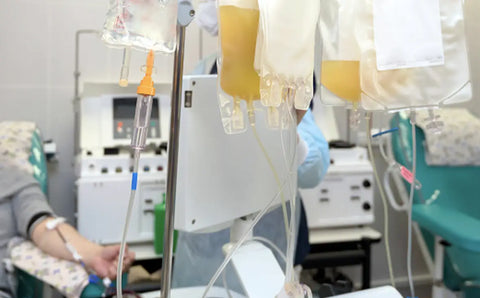
Blood cells
We have three main groups of blood cells (white, red, and platelets), which perform essential functions for maintaining health.
Red blood cells carry oxygen from the lungs to the tissues, allowing our cells to breathe.
White blood cells are responsible for the defense of our organisms, particularly in the fight against invading microorganisms.
Platelets are small colorless blood cells, essential in stopping bleeding - patients with low platelets have spontaneous bleeding.
Calc Sulph may help with cellular regeneration, skin problems, blemishes, and slow-healing wounds. Effective natural therapy for discharge issues related to pimples, boils, ulcers & more.
Who can be an apheresis-machine donor?
To be an apheresis donor, you must meet the criteria for being a conventional blood donor, which the apheresis team will previously evaluate. This assessment helps verify the condition of the veins and the result of the hematological examination, knowing the blood component levels intended to collect.
Exceptionally, people who do not qualify as conventional blood donors may be apheresis donors when the desired component of that donor is rare (e.g., the donor has a scarce blood type or stem cell donors for transplants).
How does it work?
For your better understanding, we can divide this process into parts.
First, a plastic, sterile, disposable kit is installed into the collection machine. Your blood will circulate through it, and in no time, it will come into contact with the machine. This circuit is composed of three parts joined together.
The first part consists of collecting the blood, adding an anticoagulant, and transferring it to a second compartment: centrifugation.
In this part, the collected blood is separated into its main components and arranged in layers (plasma, platelet-rich plasma, white blood cells, and red blood cells), allowing selective collection of the desired part in a small collection bag.
Then comes the return route part, which happens when the other components are remixed and returned to the donor.
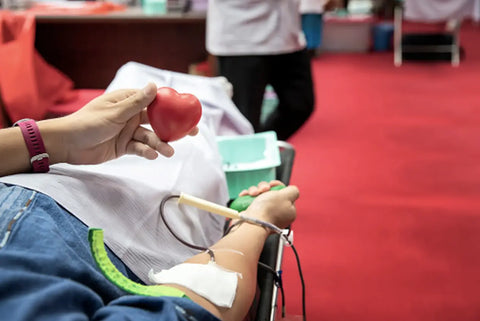
Who needs red blood cell transfusions?
People with anemia have little hemoglobin, a red protein responsible for transporting oxygen within red blood cells. So, the first thought might be that they need it.
However, it is more complicated. People with anemia do not always need to receive red blood cells, or, as we call the collection product, Red Blood Cell Concentrate. They can often be treated by stimulating their organism to produce what it lacks. Of course, when this is impossible, or the delay could cause damage, the transfusion of packed red blood cells is beneficial.
On the other hand, epidemiological estimates assume that most people over 70 years of age will, at some point, need a red blood cell transfusion.
Who needs platelet transfusion?
Patients with too few platelets in their blood or, less often, those with defective platelets in their function need this type of transfusion.
Our blood cells are produced by “mother cells” from the red bone marrow in the pelvis, chest, spine, and skull bones.
Most people who need platelet transfusions are patients with diseases that directly affect the bone marrow, whether benign or malignant, or those whose treatment harms and impairs the production of blood cells in the bone marrow, as occurs from chemotherapy.
Eventually, in heart surgery or organ transplantation, where the need for transfusions can be great, the need for platelet transfusion is also common.
Benefits of apheresis donation
There are many advantages for the patient, the transfusion service, and the donor.
For patients, this method allows you to collect more of the desired blood component in a small volume. Thus, the patient receiving this product has his needs met and is exposed to fewer transfusions.
For the transfusion service, it is easier to meet the needs of patients and maintain their stocks when they can count on a small number of apheresis donors. To give you a good idea of this, although the donated volume is small, an apheresis platelet donor donates enough platelets to serve up to two patients, which would require up to 20 blood donors without using machines to achieve this.
Data shows that 120 platelet donors by apheresis in one month produce the equivalent of the conventional collection of 2,000 donors. Therefore, the automatic collection makes it possible to meet a much higher demand for platelet transfusions with a relatively small number of donors.
For donors, there are two types of advantages. One is spiritual and caused by witnessing the good the donation has done for needy patients and being aware that producing equivalent results with conventional donations would take 20 blood donors.
The other advantage for the donor is technical. In platelet donations, the loss of red blood cells from the donor is very low, corresponding to 15-30 mL, depending on the equipment used.
Donated platelet concentrate primarily contains plasma and platelets, and these components are quickly replenished. The donor's tolerance is much better than conventional blood donation. Due to the donor's excellent tolerance, it is possible to donate platelets at intervals of 3 days, while a traditional blood donation must respect intervals of 2 or 3 months for men and women, respectively.
If the patient is your friend or relative and you are willing to be a platelet donor, your willingness to donate in small intervals, once a week, for example, can supply all or almost all the needs of that loved one. If this is your intention, state your intent during the donation interview.
BM186 is useful for emotional distress and trauma. It may help your body to deal with fatigue and poor concentration. Effective natural support for anxiety and ability to cope with stress.
What are the benefits of blood donation?
Donating blood helps people:
- Who go through disasters or emergencies
- Who lose blood during major surgeries
- Who have lost blood due to a gastrointestinal bleed
- Who have serious complications during pregnancy or childbirth
- Who have severe anemia
However, the benefits are not exclusive to the blood receivers. If you donate blood, you can benefit physically and emotionally.
Blood donation helps lower iron levels in your blood. Donating blood removes some red blood cells responsible for carrying iron throughout the body. Nevertheless, this is only beneficial if your iron levels are too high. Logically, it doesn’t apply to people with low iron levels.
BIO1 is best used for problems associated with Iron-deficiency. It may support your body in managing, absorbing, and using needed nutrients. Effective natural support for the immune system and energy levels.
One study shows donors had lower cholesterol and triglyceride levels after donating blood.
BM135 is best used for issues related to high cholesterol, including deposits of excess fatty substance that collect in the skin or eyelid tissues and nodules in tendons, hands, or feet.
Lastly, blood donation provides emotional benefits from the awareness that you helped someone. It helps reduce stress, improve your emotional well-being, help get rid of negative feelings, give a sense of belonging, reduce isolation, and create feelings of accomplishment and positivity.
BIO16 is recommended for nervous exhaustion, fatigue, or sleeplessness resulting from stress and anxiety. Natural support for your nervous system to help cope with everyday stress and negative events.
Is donating blood safe?
Yes, donating blood is safe. There is no risk of contracting an infectious disease when donating blood. However, there is a small risk that the donor will feel unwell during or shortly after the donation, especially the first few times they donate.
That is why you’ll be given snacks and a drink after you're finished to get your body back to normal. Plus, before leaving, you’ll want to rest for at least 10 minutes to restore your strength and energy.
If you still feel unwell, check in with a medical professional.
- Does blood donation cause iron deficiency?
Some subgroups of donors are at greater risk of developing iron deficiency and adverse effects: premenopausal women, donors with hemoglobin values close to the minimum, and frequent donors.
Blood donation can be made every four months by women and every three months by men. The replacement time for iron donation depends on the amount of blood collected, frequency, age, gender, diet, and intake of supplements.
Most of the iron in our bodies is recycled. A small percentage is lost daily through cell debris and, in the case of women of childbearing age, through menstruation. Daily physiological losses of iron in non-blood donors are about 1 mg in men and 1.5 to 2 mg in women of menstrual period, although 4 mg may be lost daily during menstruation. Thus, maintenance of iron balance requires adequate daily intake.
The recommended daily amounts of iron in adulthood for men are 8 mg, and for women, they are 18 mg up to age 50 and 8 mg from age 51.
Therefore, taking measures to minimize the iron deficit induced by blood donation is essential.
An adequate and varied diet, balanced and rich in iron, is necessary. Here are some healthy iron-rich foods that you can include in your diet:
- Shellfish
- Spinach
- Liver and other organ meats
- Legumes
- Red meat
- Quinoa
- Pumpkin seeds
- Turkey
- Broccoli
- Tofu
- Dark chocolate
- Fish
If you cannot maintain your iron levels, supplements usually help – they are even required for people with too low iron levels.
BM208 is recommended for iron absorption, extreme fatigue, and skin pallor.
Who cannot donate?
The leading causes of the inability to donate blood are listed below. However, some situations are not included in this list and will be defined during clinical screening by the nurse or physician who will complete your questionnaire.
You cannot donate blood if:
- You are under 16 years old or over 69 years old.
- You weigh less than 50 kilos.
- You are anemic in the test performed immediately before the donation.
- You have arterial hypertension or hypotension at the time of donation.
- You have increased or decreased heartbeats at the time of donation.
- You had a fever on the day of the donation.
- You are pregnant.
- You are breastfeeding unless the birth occurred more than 12 months.
The bottom line
Blood donation is an act that can help save other people’s lives while providing benefits to the donors, as well.
Before doing it, remember that your safety comes first. So, if it makes you feel uneasy, or you don’t fit the requirements, don’t stress yourself.
After doing it, prioritize rest and your well-being, and don’t hesitate to ask for medical help if needed.


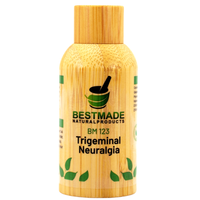
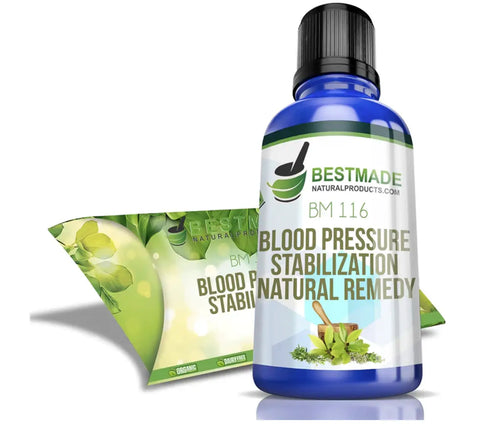
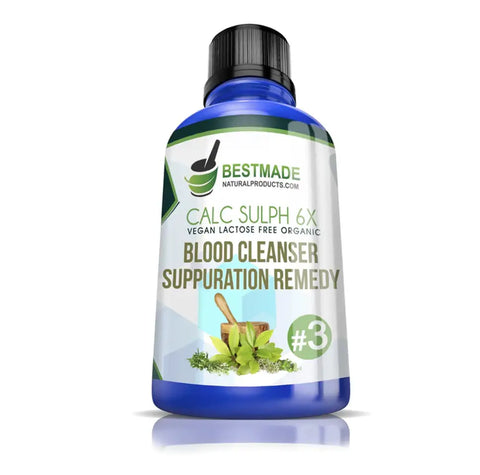
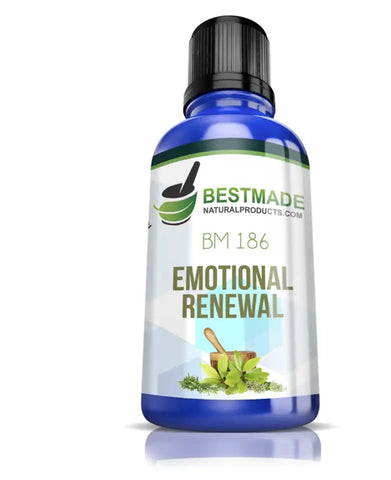
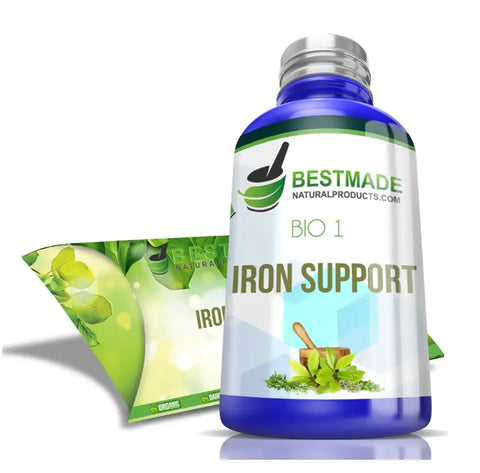
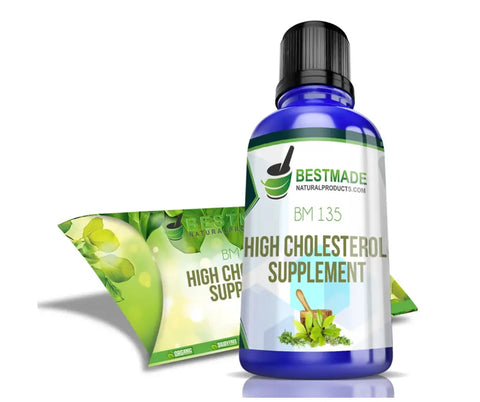
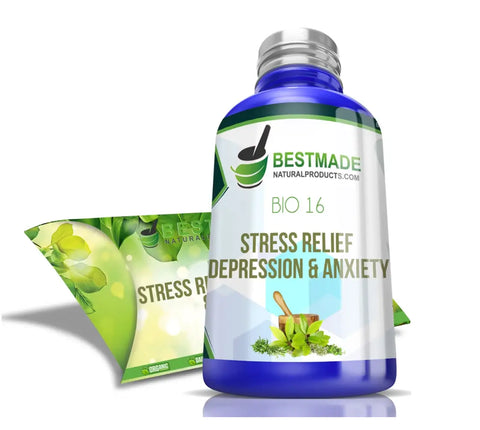
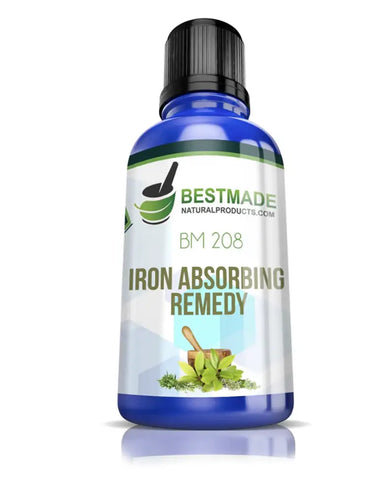
Deixe um comentário